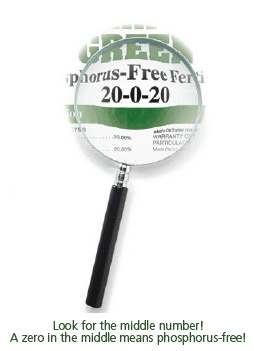Watershed Management
Phosphorus is the nutrient that most often stimulates
excessive growth of aquatic plants, leading to a variety
of problems known collectively as eutrophication. Elevated
phosphorus levels are causing premature aging of many
Michigan lakes. Once in a lake, a single pound of
phosphorus can generate hundreds of pounds of aquatic
vegetation.
The primary sources of phosphorus input to Houghton
Lake were studied in 1972 (Pecor et al. 1973). The study
estimated relative phosphorus contributions to be: Major
tributaries, including the Cut River, Spring Brook, Denton
Creek, and Knappen Creek (41.4%); precipitation on the lake
surface (41.3%); forest and marsh drainage, including three
minor tributaries (10.7%); residential drainage, including
two minor tributaries (4.4%); shallow groundwater, including
septic system drainage (1.9%); and deep groundwater (0.3%).
Since the 1972 study, phosphorus from septic systems was
controlled with the installation of sanitary sewers around
the lake. Although precipitation is one of the largest
sources of phosphorus to Houghton Lake, there is little
that individual communities can do to control the
phosphorus in precipitation. However, much of the
phosphorus in residential runoff is lawn fertilizers. Often,
on established lawns, there is sufficient phosphorus available in the soils to support healthy lawn cover. In these situations, excess phosphorus in fertilizers can be washed into area lakes and streams. To help address this problem, the four townships bordering Houghton Lake (Markey, Lake, Roscommon, and Denton) as well as Roscommon County all adopted an ordinance that limits phosphorus fertilizer use.
10 Ways To Protect The Lake
1. Don't use lawn fertilizer that contains phosphorus.
2. Use the minimum amount of fertilizer recommended on the label—more is not necessarily better!
3. Water the lawn sparingly to avoid washing nutrients and sediments into the lake.
4. Don't feed ducks and geese near the lake. Waterfowl droppings are high in nutrients and may cause swimmer's itch.
5. Don't burn leaves and grass clippings near the shoreline. Nutrients concentrate in the ash and can easily wash into the lake.
6. Don't mow to the water's edge. Instead, allow a strip of natural vegetation (i.e., a greenbelt) to become established along your waterfront. A greenbelt will trap pollutants, and discourage nuisance geese from frequenting your property.
7. Infiltrate drainage from your downspouts rather than letting it flow overland to the lake.
8. Don't dump anything in area wetlands. Wetlands are natural purifiers.
9. If you trailer your boat from lake to lake, wash your boat and trailer before launching back into Houghton Lake.
10. Don't be complacent—our collective actions can make or break the lake!

